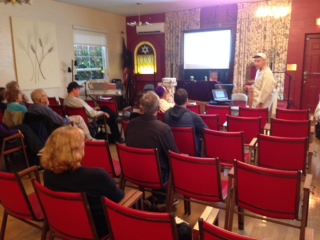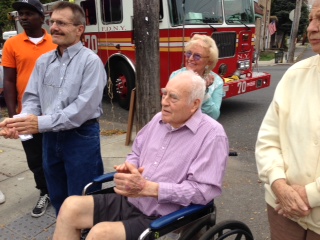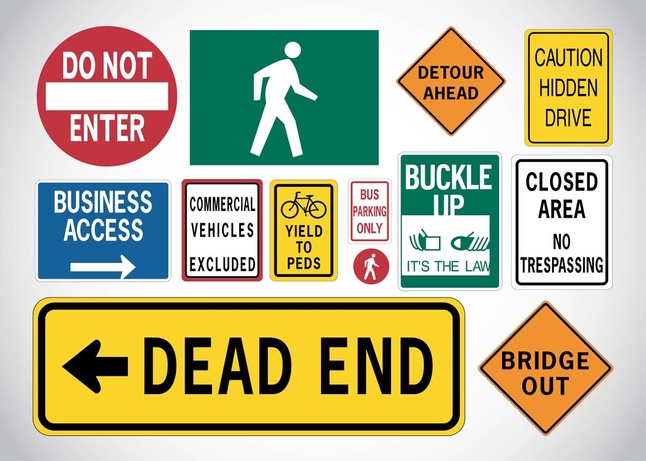This Week in History, Oct 6 - Oct 12
Oct 06, 1866
First U.S. train robbery. On this day in 1866, the Reno gang carries out the first robbery of a moving train in the U.S., making off with over $10,000 from an Ohio & Mississippi train in Jackson County, Indiana. Prior to this innovation in crime, holdups had taken place only on trains sitting at stations or freight yards. This new method of sticking up moving trains in remote locations low on law enforcement soon became popular in the American West, where the recently constructed transcontinental and regional railroads made attractive targets. With the western economy booming, trains often carried large stashes of cash and precious minerals. The sparsely populated landscape provided bandits with numerous isolated areas perfect for stopping trains, as well as plenty of places to hide from the law. Some gangs, like Butch Cassidy's Wild Bunch, found robbing trains so easy and lucrative that, for a time, they made it their criminal specialty. Railroad owners eventually got wise and fought back, protecting their trains' valuables with large safes, armed guards and even specially fortified boxcars. Consequently, by the late 1800s, robbing trains had turned into an increasingly tough and dangerous job.
Oct 07, 2003
Arnold Schwarzenegger becomes California governor. On this day in 2003, actor Arnold Schwarzenegger is elected governor of California, the most populous state in the nation with the world's fifth-largest economy. Despite his inexperience, Schwarzenegger came out on top in the 11-week campaign to replace Gray Davis, who had earlier become the first United States governor to be recalled by the people since 1921. Schwarzenegger was one of 135 candidates on the ballot, which included career politicians, other actors, and one adult-film star.
Oct 08, 1871
Great Chicago Fire begins. On this day in 1871, flames spark in the Chicago barn of Patrick and Catherine O'Leary, igniting a two-day blaze that kills between 200 and 300 people, destroys 17,450 buildings, leaves 100,000 homeless and causes an estimated $200 million (in 1871 dollars; $3 billion in 2007 dollars) in damages. Legend has it that a cow kicked over a lantern in the O'Leary barn and started the fire, but other theories hold that humans or even a comet may have been responsible for the event that left four square miles of the Windy City, including its business district, in ruins. Dry weather and an abundance of wooden buildings, streets and sidewalks made Chicago vulnerable to fire. The city averaged two fires per day in 1870; there were 20 fires throughout Chicago the week before the Great Fire of 1871.
Oct 09, 1967
Che Guevara is executed. On this day in 1967, socialist revolutionary and guerilla leader Che Guevara, age 39, is killed by the Bolivian army. The U.S.-military-backed Bolivian forces captured Guevara on October 8 while battling his band of guerillas in Bolivia and assassinated him the following day. His hands were cut off as proof of death and his body was buried in an unmarked grave. In 1997, Guevara's remains were found and sent back to Cuba, where they were reburied in a ceremony attended by President Fidel Castro and thousands of Cubans. Ernesto Rafael Guevara de la Serna was born to a well-off family in Argentina in 1928. While studying medicine at the University of Buenos Aires, he took time off to travel around South America on a motorcycle; during this time, he witnessed the poverty and oppression of the lower classes. He received a medical degree in 1953 and continued his travels around Latin America, becoming involved with left-wing organizations. In the mid 1950s, Guevara met up with Fidel Castro and his group of exiled revolutionaries in Mexico. Guevara played a key role in Castro's seizure of power from Cuban dictator Fulgencio Batista in 1959 and later served as Castro's right-hand man and minister of industry. Guevara strongly opposed U.S. domination in Latin America and advocated peasant-based revolutions to combat social injustice in Third World countries.
Oct 10, 1985
Achille Lauro hijacking ends. The hijacking of the Italian cruise ship Achille Lauro reaches a dramatic climax when U.S. Navy F-14 fighters intercept an Egyptian airliner attempting to fly the Palestinian hijackers to freedom and force the jet to land at a NATO base in Sigonella, Sicily. American and Italian troops surrounded the plane, and the terrorists were taken into Italian custody. On October 7, four heavily armed Palestinian terrorists hijacked the Achille Lauro in the Mediterranean Sea off the coast of Alexandria, Egypt. Some 320 crewmembers and 80 passengers, were taken hostage. Hundreds of other passengers had disembarked the cruise ship earlier that day to visit Cairo and tour the Egyptian pyramids. Identifying themselves as members of the Palestine Liberation Front--a Palestinian splinter group--the gunmen demanded the release of 50 Palestinian militants imprisoned in Israel. If their demands were not met, they threatened to blow up the ship and kill the 11 Americans on board. The next morning, they also threatened to kill the British passenger
Oct 11, 2002
Jimmy Carter wins Nobel Prize. On this day in 2002, former President Jimmy Carter wins the Nobel Peace Prize "for his decades of untiring effort to find peaceful solutions to international conflicts, to advance democracy and human rights, and to promote economic and social development." Carter, a peanut farmer from Georgia, served one term as U.S. president between 1977 and 1981. One of his key achievements as president was mediating the peace talks between Israel and Egypt in 1978. The Nobel Committee had wanted to give Carter (1924- ) the prize that year for his efforts, along with Anwar Sadat and Menachim Begin, but was prevented from doing so by a technicality--he had not been nominated by the official deadline.
Oct 12, 1492
Columbus reaches the New World. After sailing across the Atlantic Ocean, Italian explorer Christopher Columbus sights a Bahamian island, believing he has reached East Asia. His expedition went ashore the same day and claimed the land for Isabella and Ferdinand of Spain, who sponsored his attempt to find a western ocean route to China, India, and the fabled gold and spice islands of Asia.
Columbus was born in Genoa, Italy, in 1451. Little is known of his early life, but he worked as a seaman and then a maritime entrepreneur. He became obsessed with the possibility of pioneering a western sea route to Cathay (China), India, and the gold and spice islands of Asia. At the time, Europeans knew no direct sea route to southern Asia, and the route via Egypt and the Red Sea was closed to Europeans by the Ottoman Empire, as were many land routes. Contrary to popular legend, educated Europeans of Columbus' day did believe that the world was round, as argued by St. Isidore in the seventh century. However, Columbus, and most others, underestimated the world's size, calculating that East Asia must lie approximately where North America sits on the globe (they did not yet know that the Pacific Ocean existed). With only the Atlantic Ocean, he thought, lying between Europe and the riches of the East Indies, Columbus met with King John II of Portugal and tried to persuade him to back his "Enterprise of the Indies," as he called his plan. He was rebuffed and went to Spain, where he was also rejected at least twice by King Ferdinand and Queen Isabella. However, after the Spanish conquest of the Moorish kingdom of Granada in January 1492, the Spanish monarchs, flush with victory, agreed to support his voyage. On August 3, 1492, Columbus set sail from Palos, Spain, with three small ships, the Santa Maria, the Pinta, and the Nina. On October 12, the expedition reached land, probably Watling Island in the Bahamas. Later that month, Columbus sighted Cuba, which he thought was mainland China, and in December the expedition landed on Hispaniola, which Columbus thought might be Japan. He established a small colony there with 39 of his men. The explorer returned to Spain with gold, spices, and "Indian" captives in March 1493 and was received with the highest honors by the Spanish court. He was the first European to explore the Americas since the Vikings set up colonies in Greenland and Newfoundland in the 10th century.










